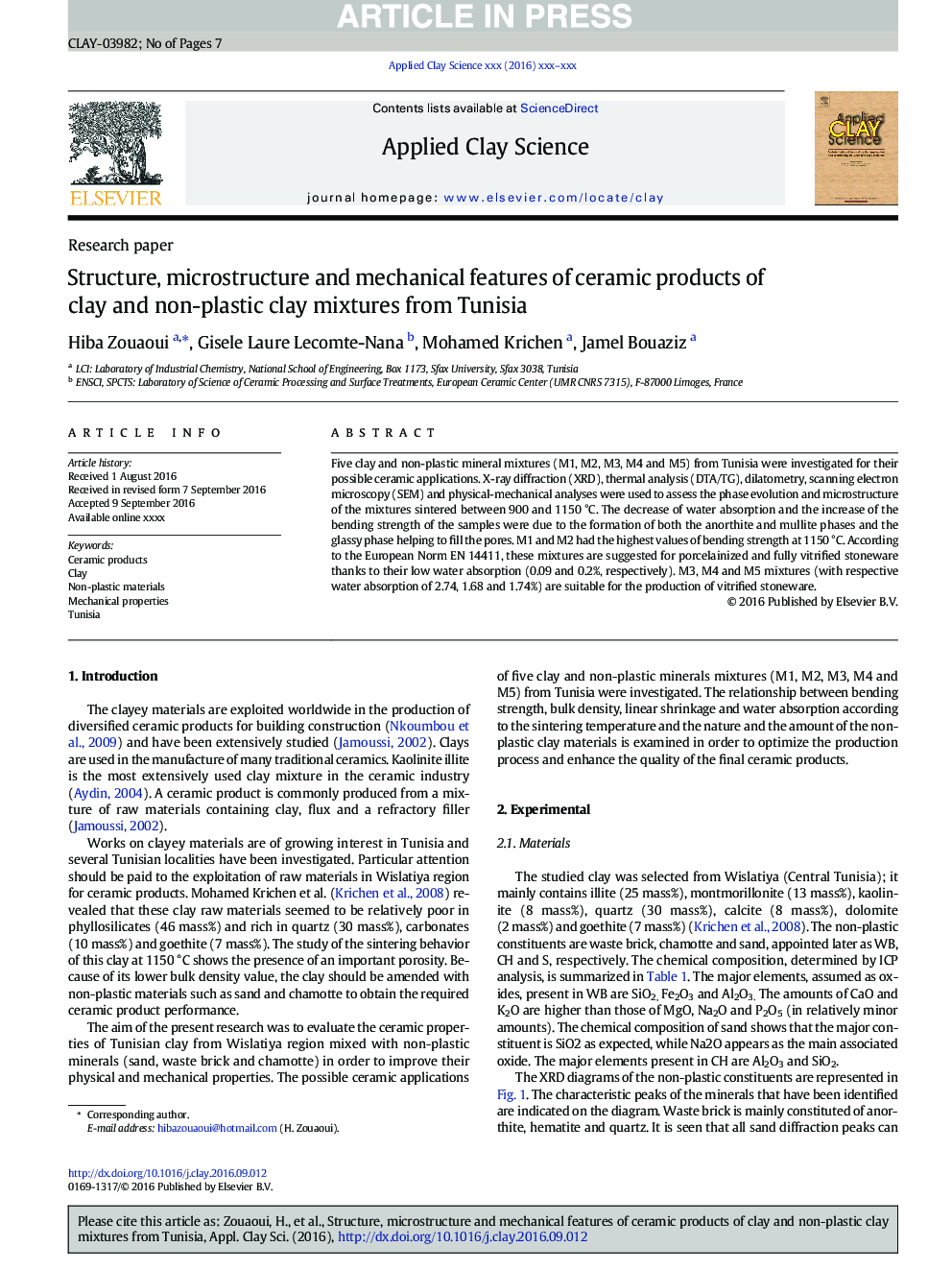| Article ID | Journal | Published Year | Pages | File Type |
|---|---|---|---|---|
| 5468961 | Applied Clay Science | 2017 | 7 Pages |
Abstract
Five clay and non-plastic mineral mixtures (M1, M2, M3, M4 and M5) from Tunisia were investigated for their possible ceramic applications. X-ray diffraction (XRD), thermal analysis (DTA/TG), dilatometry, scanning electron microscopy (SEM) and physical-mechanical analyses were used to assess the phase evolution and microstructure of the mixtures sintered between 900 and 1150 °C. The decrease of water absorption and the increase of the bending strength of the samples were due to the formation of both the anorthite and mullite phases and the glassy phase helping to fill the pores. M1 and M2 had the highest values of bending strength at 1150 °C. According to the European Norm EN 14411, these mixtures are suggested for porcelainized and fully vitrified stoneware thanks to their low water absorption (0.09 and 0.2%, respectively). M3, M4 and M5 mixtures (with respective water absorption of 2.74, 1.68 and 1.74%) are suitable for the production of vitrified stoneware.
Related Topics
Physical Sciences and Engineering
Earth and Planetary Sciences
Geochemistry and Petrology
Authors
Hiba Zouaoui, Gisele Laure Lecomte-Nana, Mohamed Krichen, Jamel Bouaziz,
